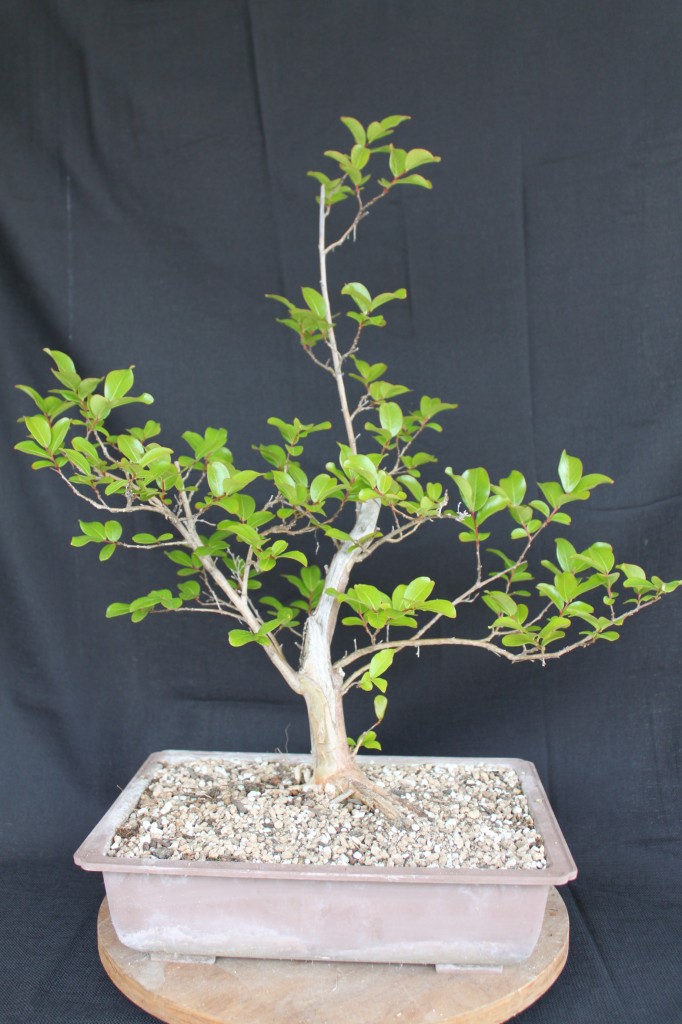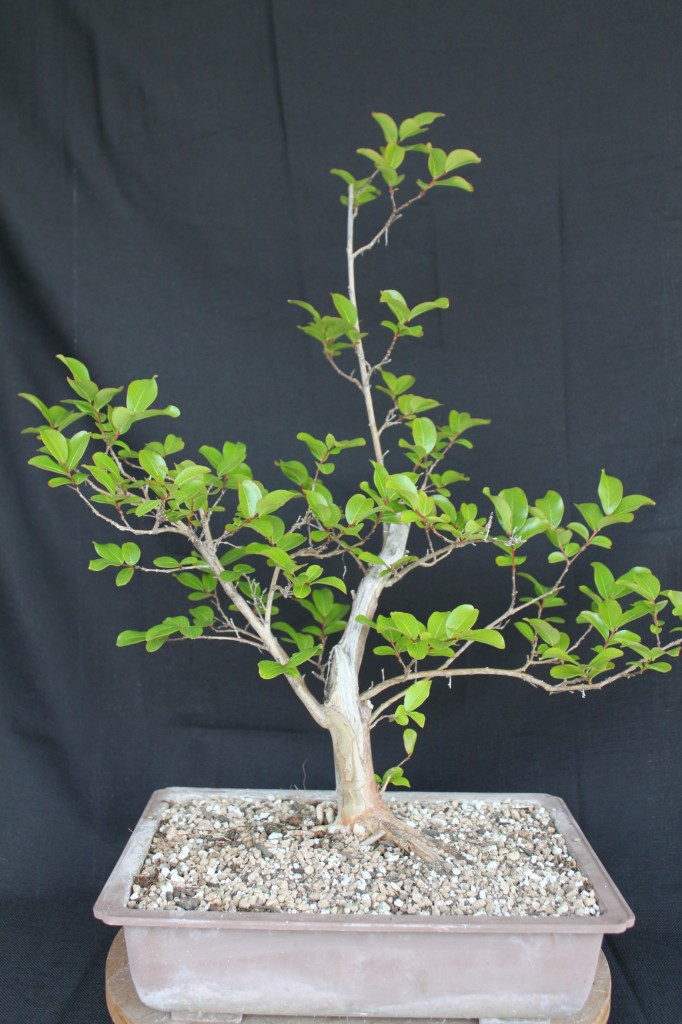Crape Myrtle Bonsai
Crape Myrtle Bonsai
Crape Myrtle Bonsai tend to be visually striking, especially when they are in bloom. Even when they are not, the Crape Myrtle is still an imposing bonsai, thanks to the small, bright green leaves, the interesting bark patterns, heavy root buttress, and some even have deadwood features.
Background:
The Crape Myrtle (Lagerstroemia) is genus of about fifty species of trees and shrubs native to South Asia, Northern Australia, and some Pacific islands. While some can grow as tall as 100 feet, and a few as small as one foot, most species grow as either small trees or large shrubs. Some varieties are deciduous, and some are broadleaf evergreens. Crape Myrtles are most famous for their flowers, which grow as sprays of small blooms on the end of new branches. Flowering typically takes place in warm weather – between June and August in most temperate regions. Most deciduous Crape Myrtles also provide a show of fall color when their leaves drop; the fall leaf color can range from a bright yellow to a deep rust color. The wood of the larger varieties is sometimes used to make furniture. Aside from that, the Crape Myrtle is primarily used as an ornamental landscape tree. Landscape varieties come in very small sizes intended for container growing, shrub sizes, and typically as a small tree which tops out at twenty to thirty feet high. Flower colors range from deep purple through pinks and reds, to a bright white.
Where to Get One:
Most landscape nurseries in just about every part of the world will stock some variety of Crape Myrtle. Sizes available will range from one gallon, to fully grown trees in large boxes. If you intend to create a bonsai with a thick trunk, get the largest and thickest tree that you can manage to bring home. Although Crape Myrtles will send out long shoots, in general they are slow to thicken. My neighbor put a one inch thick sapling in his front yard about eight years ago, and it has taken the past eight years to reach a trunk caliper of about six inches.
What to Do When You Get it Home:
To create a Crape Myrtle bonsai, chop back the trunk in early spring, then start choosing and wiring out branch structure. Reduction pruning and building a trunk by chopping works fairly well once you have the desired caliper and root base. You can also build branch structure by pruning, but remember – Crape Myrtles flower on the ends of new growth, so if you cut back branches to build a bonsai, no flowers for you.
Soil and Potting:
Crape Myrtle bonsai like free draining, well aerated soil, but they also need some organic matter to support rapid leaf growth in the spring, and flowers in the summer and fall. They do well in a mixture which is about 60% aggregate and 40% organic. Aggregate can be Akadama, decomposed granite, coarse sand, turface, or diatomite, or any combination of the above. Organic matter can be composted bark, or anything similar. A little composted steer manure in the soil helps by providing the nitrogen necessary for leaf production. Crape Myrtle bonsai should be potted or repotted while dormant, before they start pushing leaves in the spring.
Siting:
Crape Myrtle bonsai do not need to be in the shade. Crape Myrtles grow in the sun in nature, and as bonsai, they can also tolerate full sun. While they will tolerate some shade, putting them in a situation of insufficient light will probably cause an increase in leaf size.
Pruning and Styling:
Crape Myrtles can be shaped into just about any bonsai style, although cascade is very unlikely, because of the size, shape, and alignment of the flower growth. They respond well to wiring, and they also respond well to pruning. If you prune heavily for shape, you may have to sacrifice the current season’s flower growth. Crape Myrtles issue flowers on the ends of new growth. Although not commonly seen, you can carve deadwood features on a Crape Myrtle. The wood is very hard and durable, and Crape Myrtles tolerate deadwood, and will even form their own if they suffer a dieback and regrowth.
Closing Remarks:
As bonsai, Crape Myrtles have it all: Beautiful flowers, small leaves, interesting bark, fall color, and even deadwood features.



